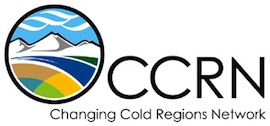Western Cordillera Biome
The Western Cordillera includes the southern cordillera headwaters exemplified by the Canada Foundation for Innovation (CFI) -funded Canadian Rockies Hydrological Observatory (including Marmot Creek) in the sub-alpine and montane forested Saskatchewan River headwaters, Lake O'Hara alpine sites and the Natural Resources Canada (NRCan) -funded Columbia Icefield Glacier-Climate Observing System in the glaciated Athabasca headwaters, Alberta. This provides a cluster of >25 high elevation snow/ice and hydro-meteorological stations in nested gauged catchments. In addition, the NRCan-funded Brintnell-Bologna Icefield, NWT and the Yukon Environment-supported Wolf Creek Research Basin, Yukon, exemplify glaciated and nonglaciated sub-arctic northern cordillera headwaters of the Mackenzie River. Unique observations of alpine and sub-alpine sub-surface storage and release are available from Lake O'Hara and Marmot Creek. Alpine treelines in this area are advancing in elevation where geomorphology and microclimate permit. Provincial, territorial and federal observation stations for flood forecasting, climate and fire prediction are clustered at both high and low elevations in the region. The archive for Marmot Creek covers most of 50 years and for Wolf Creek covers 20 years.
WECC Observatories

